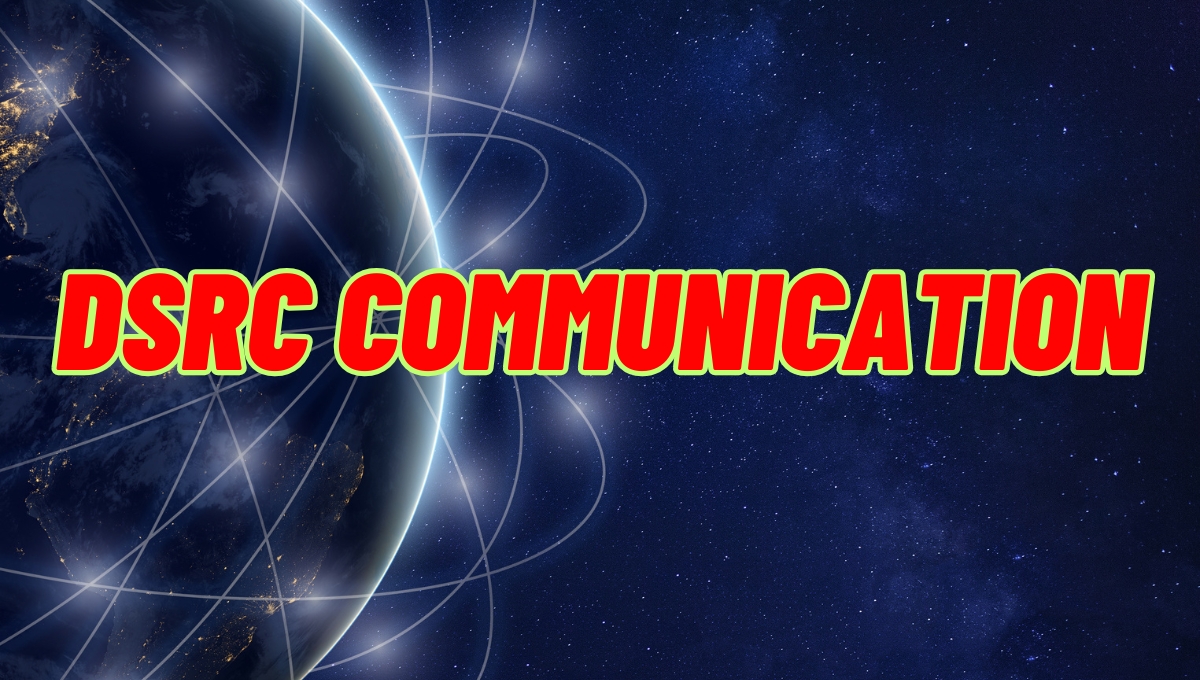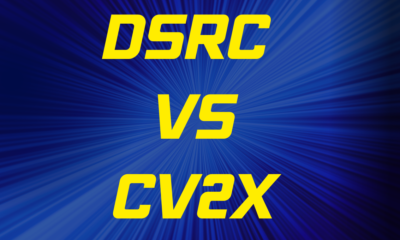DSRC Communication
The Crossroads of Connectivity: DSRC vs. C-V2X Technologies in Automotive Communication
Published
2 months agoon
By
Dev Dev
The landscape of automotive communication is currently navigating a critical juncture, marked by the debate between two prominent technologies: Dedicated Short-Range Communications (DSRC) and Cellular Vehicle-to-Everything (C-V2X). Both aim to revolutionize transportation by enabling vehicles to communicate with each other, infrastructure, pedestrians, and the network, but they approach this goal with distinct technological foundations and deployment strategies. Understanding the nuances of each is crucial for stakeholders in the automotive industry as they chart the course for future mobility.
Dedicated Short-Range Communications (DSRC): A Mature Contender
DSRC, based on the IEEE 802.11p standard, is a mature technology specifically designed for automotive applications. Operating in the 5.9 GHz band, it facilitates direct, low-latency communication between vehicles (V2V) and between vehicles and roadside infrastructure (V2I) without relying on cellular networks. This independence from cellular infrastructure is a key characteristic, allowing for consistent and reliable communication in areas with limited or no cellular coverage.
Key features and potential advantages of DSRC include:
Low Latency: DSRC offers very low communication latency, crucial for time-sensitive safety applications like collision avoidance warnings.
Direct Communication: Its ability to establish direct links between devices without network involvement enhances reliability and reduces potential points of failure.
Privacy: As it doesn’t rely on cellular networks, DSRC communication can offer a higher degree of privacy.
Proven Technology: DSRC has been under development and testing for a longer period, with some early deployments in specific regions.
However, DSRC also faces certain challenges:
Limited Range: The communication range of DSRC is typically shorter compared to cellular-based technologies.
Infrastructure Dependence (for V2I): While V2V communication is direct, V2I applications require the deployment of dedicated roadside units (RSUs).
Spectrum Allocation Uncertainty: In some regions, the dedicated spectrum allocated to DSRC has faced challenges and re-evaluation.

DSRC Communication
Cellular Vehicle-to-Everything (C-V2X): Leveraging Existing Infrastructure
C-V2X, standardized by the 3rd Generation Partnership Project (3GPP), leverages existing cellular network infrastructure (LTE and increasingly 5G) for V2N (Vehicle-to-Network) communication. Additionally, it supports direct communication (PC5 interface or sidelink) for V2V, V2I, and V2P, operating in the same 5.9 GHz band as DSRC. This dual-mode capability is a significant differentiator.
Key features and potential advantages of C-V2X include:
Wider Range and Coverage: Utilizing cellular networks provides a broader communication range and coverage area, particularly beneficial for V2N applications and less densely populated areas.
Leveraging Existing Infrastructure: C-V2X can capitalize on the extensive existing cellular infrastructure, potentially reducing the need for widespread deployment of dedicated RSUs for certain applications.
Evolution with Cellular Technology: As cellular technology advances (e.g., 5G), C-V2X can benefit from higher bandwidth, lower latency, and increased reliability.
Versatility: The ability to utilize both direct and network-based communication offers flexibility for various use cases, from safety-critical alerts to infotainment services.
However, C-V2X also presents its own set of considerations:
Network Dependency: Reliance on cellular networks means communication availability and latency can be affected by network coverage and congestion.
Potential for Higher Latency (Network-Based): While direct communication offers low latency, network-based communication might introduce slightly higher latency.
Security and Privacy Concerns: Utilizing cellular networks raises considerations regarding data security and user privacy.
Earlier Stage of Deployment: Compared to DSRC, large-scale commercial deployments of C-V2X are generally in an earlier phase.
The Path Forward: Coexistence or Dominance?
The debate between DSRC and C-V2X has been ongoing for several years, with different regions and stakeholders adopting varying stances. Some regions initially favored DSRC, while others have shifted their focus towards C-V2X, recognizing its potential to leverage the evolving cellular ecosystem.
The reality might not be a complete dominance of one technology over the other. Hybrid solutions or regional variations could emerge. For instance, direct communication capabilities (similar to DSRC’s strength) are a key component of C-V2X, aiming to address the latency and reliability requirements of critical safety applications without constant network dependency.
Ultimately, the successful deployment of V2X technology, regardless of the underlying communication standard, hinges on factors such as:
Regulatory Support and Spectrum Allocation: Clear and consistent regulatory frameworks are essential for fostering investment and deployment.
Industry Collaboration and Standardization: Interoperability and standardized communication protocols are crucial for seamless communication across different vehicle makes and infrastructure.
Real-World Testing and Validation: Extensive testing in diverse environments is necessary to ensure the reliability and effectiveness of V2X applications.
Cost-Effectiveness of Deployment and Maintenance: The economic viability of deploying and maintaining the necessary infrastructure will play a significant role in adoption rates.
As the automotive industry continues its journey towards greater connectivity and automation, the choice and implementation of V2X technology will be a critical determinant of the safety, efficiency, and overall experience of future mobility. The ongoing evolution and real-world deployments of both DSRC and C-V2X will ultimately shape the landscape of connected vehicles for years to come.
You may like

Drone-UAV RF Communication: The Backbone of Modern Aerial Operations

OTP Verification at Scale with VoIP Smart Support

From Cloud to Edge: Object Detection Gets an Upgrade
Trending
-
Marketing & Analytics2 years ago
A Complete Guide To HubSpot’s New B2B Marketing, Sales Hub, and Prospecting Tool
-
3D Technology2 years ago
3D Scanner Technology for Android Phones: Unleashing New Possibilities
-
Marketing & Analytics2 years ago
How SMS Services And Software For Bulk SMS Sending Can Help Your Business Grow
-
3D Technology2 years ago
Mobile 3D Scanners: Revolutionizing 3D Scanning Technology
-
3D Technology3 years ago
3D scanning technologies and scanning process
-
Business Solutions1 year ago
Understanding A2P Messaging and the Bulk SMS Business Landscape
-

 Business Solutions1 year ago
Business Solutions1 year agoThe Power of Smarts SMS and Single Platform Chat Messaging
-

 Automotive2 years ago
Automotive2 years agoDSRC vs. CV2X: A Comprehensive Comparison of V2X Communication Technologies




